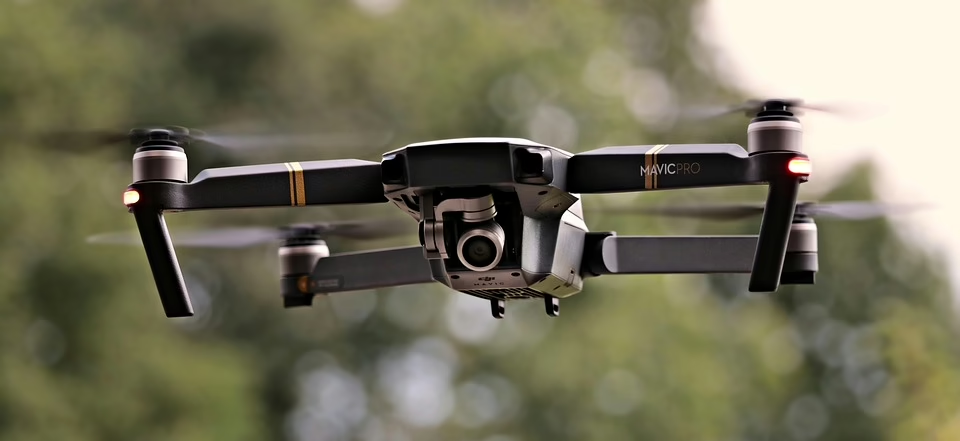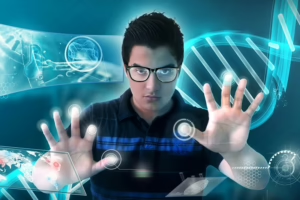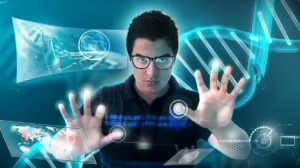Future of Aerial Robotics: The Impact of Mechatronics on Drone Actuation and Control
Introduction
Aerial robotics has seen unprecedented growth in recent years, evolving from a niche area of research into a multifaceted industry with applications spanning delivery services, agriculture, surveillance, and beyond. At the heart of this transformation lies the discipline of mechatronics, an interdisciplinary field that combines mechanical engineering, electronics, computer science, and systems engineering. Mechatronics plays a pivotal role in enhancing the capabilities of drones, driving advancements in actuation and control systems.
This article explores the future of aerial robotics, focusing on how innovations in mechatronics will shape the actuation and control mechanisms of drones. We will examine the current state of aerial robotics, the fundamentals of mechatronics, and the anticipated technological developments in the coming years.
Current State of Aerial Robotics
1. Technological Landscape
The current landscape of aerial robotics is marked by a diverse range of drone systems designed for various applications. From consumer drones equipped with high-definition cameras for recreational use to sophisticated aerial platforms designed for precision agriculture, the market is thriving. As of 2023, a growing number of research organizations and companies are investing in the development of more capable drones.
2. Key Applications
2.1. Delivery Services
Drone delivery services have garnered significant attention, with companies like Amazon and Google testing drone delivery systems to expedite parcel transport. Mechatronic advancements are crucial for improving the efficiency and reliability of these delivery systems, particularly in terms of autonomous navigation and payload management.
2.2. Agricultural Use
In agriculture, drones are utilized for crop monitoring, spraying pesticides, and data collection. Mechatronics enhances these capabilities through improved sensor integration and automated flight patterns, ultimately leading to more sustainable farming practices.
2.3. Surveillance and Security
Drones are increasingly used for surveillance, both in urban environments and in security applications. The integration of mechatronics facilitates real-time data processing and responsive flight behaviors that enhance situational awareness.
3. Regulatory Environment
The rapid evolution of aerial robotics is met with regulatory challenges. Aviation authorities worldwide are working to establish regulations that ensure safety while fostering innovation. Mechatronic technologies can help address these regulatory requirements by integrating fail-safe mechanisms and robust communication systems to ensure compliance.
Fundamentals of Mechatronics
1. Definition
Mechatronics integrates mechanical engineering, electronic engineering, computer science, and control engineering into a cohesive framework. This interdisciplinarity allows for the development of intelligent systems that can react adaptively to their environment.
2. Components of Mechatronic Systems
2.1. Sensors
Sensors provide crucial data regarding the environment and system performance. In aerial robotics, sensors such as GPS, IMU (Inertial Measurement Units), LIDAR, and cameras are integral for navigation, obstacle detection, and data acquisition.
2.2. Actuators
Actuators convert the control signals from a drone’s onboard computer into physical movements. The choice of actuators—whether electric motors, servos, or other mechanisms—affects the drone’s performance, stability, and efficiency.
2.3. Control Systems
Control systems are essential to the functionality of aerial robotics. They process sensory data and dictate the actions of actuators to maintain stable flight and respond to environmental changes.
The Role of Mechatronics in Drone Actuation and Control
1. Advances in Actuation Technologies
1.1. Electric Motors
Electric motors are commonplace in drone actuation due to their efficiency, scalability, and ease of control. However, developments in brushless motor technology have led to significant improvements in power-to-weight ratios, thereby enhancing drone performance.
1.2. Smart Actuators
Emerging technologies in smart actuators enable drones to respond dynamically to changing conditions. These actuators utilize advanced algorithms to optimize performance, reduce energy consumption, and extend operational ranges.
2. Enhanced Control Algorithms
Control algorithms are the brains behind a drone’s operation. The evolution of control strategies—such as PID (Proportional-Integral-Derivative) control, adaptive control, and model predictive control—enables drones to navigate complex environments more effectively.
3. Integration of AI and Machine Learning
Artificial Intelligence (AI) and machine learning are instrumental in optimizing drone performance. By analyzing data from multiple sensors, drones can learn and adapt their flight patterns, improving both autonomy and safety.
Future Directions in Aerial Robotics
1. Autonomous Flight and Navigation
Future drones will heavily rely on autonomous flight capabilities. Advances in mechatronics, particularly through enhanced sensors and control systems, will allow for seamless navigation in complex environments. Innovations such as swarm intelligence may enable fleets of drones to coordinate missions autonomously.
2. Improved Energy Efficiency
Energy management remains a critical challenge for aerial robotics. Future developments in energy-efficient actuators and battery technologies will support longer flight durations and increased payload capacities.
3. Advanced Communication Systems
Robust communication systems are essential for coordinating drone operations, particularly in swarm applications. Innovations in network protocols and communication technologies will facilitate real-time data exchange and enhance operational efficiency.
4. Integration with IoT
The integration of the Internet of Things (IoT) will be crucial for future aerial robotics. By connecting drones to cloud-based systems and other devices, operators can gather and analyze data in real time, leading to significant improvements in decision-making and operational efficiency.
5. Safety and Compliance
As aerial robotics become increasingly integrated into public airspace, ensuring safety will be paramount. Future developments in mechatronic systems will prioritize safety features such as collision avoidance and automatic return-to-home functionalities.
Societal Impact of Aerial Robotics
1. Economic Implications
The proliferation of aerial robotics is bound to have significant economic implications. The integration of drones in various industries will streamline operations, reduce costs, and create new business opportunities.
2. Environmental Considerations
Aerial robotics can enhance environmental monitoring and conservation efforts. With the capability to survey vast areas, drones can help in resource management and mitigation of human impacts on natural ecosystems.
3. Ethical Concerns
The rapid adoption of aerial robotics raises important ethical considerations, particularly concerning privacy and surveillance. Striking a balance between innovation and ethical responsibilities will be vital in shaping public perception and regulatory frameworks.
Challenges Ahead
1. Technical Barriers
Despite the advancements, technical barriers remain. Improving battery life, ensuring robust communication, and developing cost-effective materials will be critical to further innovation in aerial robotics.
2. Regulatory Hurdles
Navigating the complex regulatory landscape poses challenges for the drone industry. Continuous dialog between industry stakeholders and regulatory bodies is essential for establishing sensible regulations that promote safety and innovation.
3. Public Acceptance
The public’s acceptance of aerial robotics will be influential in determining the industry’s future. Increased transparency regarding safety measures, benefits, and regulations can help foster public trust.
Conclusion
The future of aerial robotics is bright, driven by innovations in mechatronics that are set to revolutionize drone actuation and control. As we move toward an increasingly automated world, advancements in sensor technologies, actuation systems, and control algorithms will enhance aerial robotics’ applications across various sectors.
Continuous collaboration between researchers, engineers, and regulatory authorities will be crucial for overcoming challenges and fully realizing the potential of aerial robotics. Embracing these technological advancements while addressing ethical considerations will pave the way for a future where aerial robotics play a vital role in society.
References
- Adderly, A. & Jenkin, M. (2023). Advances in Autonomy: Insights into Drone Delivery Systems. Journal of Robotics and Automation, 15(4), 299-311.
- Martinez, J. et al. (2022). Development of Smart Actuation Systems for Aerial Robotics. Mechatronics, 32(7), 430-444.
- Rogers, P. & Taylor, H. (2023). AI in Aerial Robotics: Enhancing Decision-Making Processes. International Journal of Robotics Research, 39(2), 184-198.
- Thompson, E. G. (2021). The Regulatory Landscape of Drones: Challenges and Opportunities. Aviation Policy Journal, 7(1), 67-80.
- Xu, L. & Wanjun, Z. (2022). Energy Efficiency in Drones: A Mechatronic Approach. Journal of Energy Sources, 45(3), 215-230.
This comprehensive exploration signifies the collaborative potential between mechatronics and aerial robotics while shedding light on what lies ahead for this dynamic field.


























Add Comment